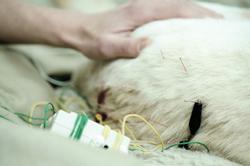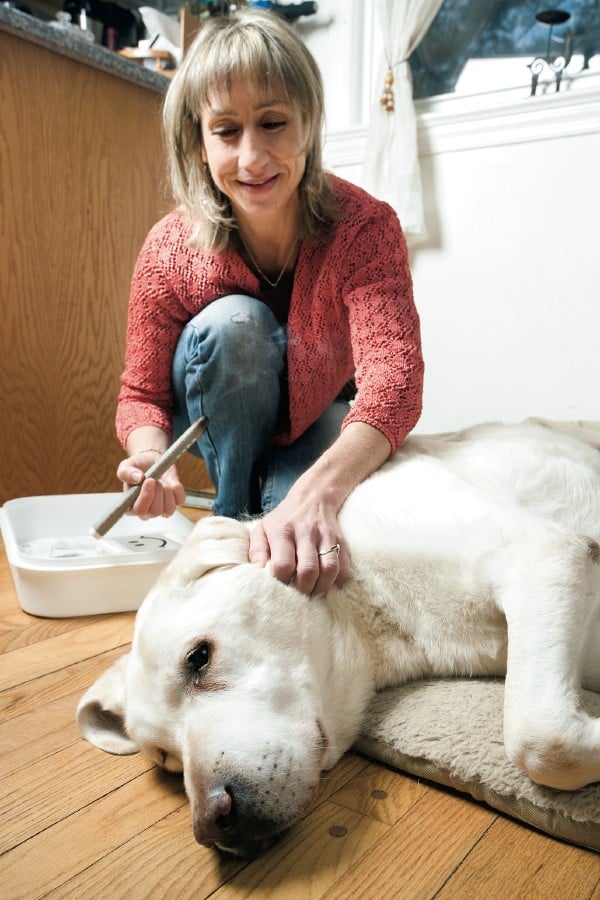Pets now can get the same medical care as their owners—from vision correction to chemotherapy.
Karin Serejski, a licensed acupuncturist, treats animals with acupuncture as well as with reiki, healing touch, and flower-essence therapy. She works with dogs, cats, horses, rabbits, ferrets, and birds.
How did you get into animal acupuncture?
I had been hearing wonderful stories from my brother, Eric Serejski, a local “people” acupuncturist. And my own personal journey led me to Eastern holistic medicine. Growing up in Burundi, where my father worked as an agricultural engineer, surrounded with animals, contributed to my love for the animal kingdom.
What changes have you seen in the eight years you’ve been practicing animal acupuncture?
It’s more accepted. The pet-food scare has opened pet owners’ eyes to the holistic approach to treating their animals, whether with nutrition or alternative techniques.
What misconceptions do people have about acupuncture?
That it treats only pain or arthritis.
What can acupuncture treat?
Most of my work addresses musculoskeletal conditions, disturbances due to chemotherapy—treating side effects like gastrointestinal distress—and chronic disease like kidney failure, especially in cats, or digestive disease. Some pet owners request treatment to address behavioral problems.
What behavioral problems can acupuncture improve?
It can address behavioral patterns that seem to stem from imbalances, such as when the energy of the liver is not flowing harmoniously, which could manifest as aggressiveness. I prefer to work with healing-touch techniques, which go straight to the issues. I also often find that it is the owners who really need some healing work to help break the patterns in their companions.
How do you put needles in if the pet is squirming?
All the animals I’ve treated collaborate with the treatments. It’s as if they know what we’re going to do; they sense it. The first session is a discovery because you need to establish trust and you have to remember the animal has already undergone many tests. So the first time you may put in fewer needles. At the following sessions, animals just plop down on the floor.
Is the owner present?
Owners are at the face of an animal and have to watch to be sure the animal doesn’t bite. That’s one of their jobs. The second is to reassure the animal and sweet-talk it while it’s receiving treatment. It’s a time of deeper intimacy with their animals. They love to watch the reaction of the animal—some sleep, some start vocalizing.

What is a session like for you?
The spark in their eyes, their kisses, the wagging of their tail upon arriving at the house move me beyond words.
Have the pet owners you work with experienced human acupuncture?
Most have not. And it’s actually seeing the results on their animals that leads them to go in for treatment on themselves.
Of which patient’s success are you proudest?
A 14-year-old golden retriever that was about to be euthanized because of his spinal arthritis and depressive state. After a few sessions he started behaving as if he were eight again. He lived to 16½.


















